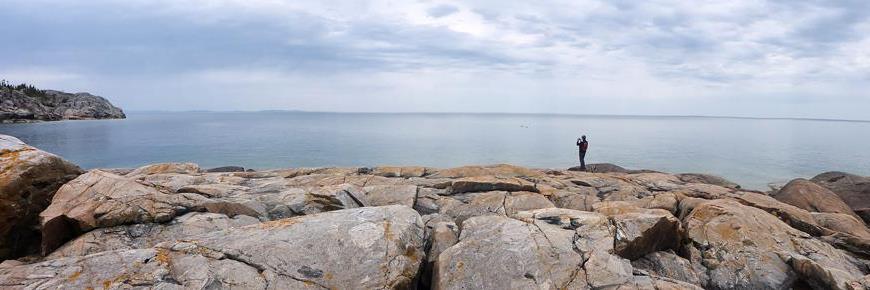
Lake sturgeon in White River
Pukaskwa National Park
By Christine Drake & Andrew Ecclestone
Prior to 2010 Lake Sturgeon in the White River had never been studied. Now, research shows the White River has one of the most abundant populations of Lake Sturgeon in the Great Lakes! This Lake Superior tributary may play an important role in restoration of this native species throughout the Great Lakes basin.
Lake Sturgeon, considered threatened in Ontario, is the largest and longest lived freshwater fish species in Canada. This bottom dwelling fish is found throughout the Great Lakes and spawns in 13 tributaries on Lake Superior. Since 2010, the Anishinabek/Ontario Fisheries Resource Centre (A/OFRC), Pic River First Nation, and Pukaskwa National Park have been studying Lake Sturgeon in the White River, where it passes through Pukaskwa. Using gill nets, researchers captured and radio tagged 45 sturgeon in order to monitor their movements and identify critical habitat in the White River. Two base station receivers were set up along the White River to record sturgeon locations and movements year-round.
 Researchers measure the girth of a sturgeon
Researchers measure the girth of a sturgeon © Parks Canada
And what we’ve found is fascinating! Unlike most Lake Sturgeon populations, who use rivers only for spawning and spend the rest of their time in lakes, the majority of the White River population stays in the river all year long. Approximately 15% of the population leaves the White River each year and Lake Sturgeon movement between the White and Pic Rivers is relatively common. We also found that the catch per unit effort (i.e. number of fish captured per net) is the second highest ever recorded on Lake Superior. The Kaministiquia River has the highest. Given the White River’s sturgeon population is abundant, self-sustaining, and protected by Pukaskwa National Park, it has now been suggested the White River Lake Sturgeon population will be critical to the overall recovery of Lake Sturgeon throughout Lake Superior.
In 2012, to get a better sense of Lake Sturgeon habitat preferences, researchers used side-scanning sonar to map habitat features, such as depth and substrate type, in the White River. Sturgeon detection records were superimposed onto the habitat maps to identify Lake Sturgeon habitat preferences. This valuable information can be used to identify, protect, and rehabilitate critical Lake Sturgeon habitat in other tributaries of the Great Lakes that have been exposed to disturbances, like dams, dredging, channelization.
- Date modified :